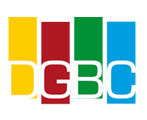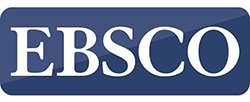Higher pedagogical education in the European Union: Innovative technologies
DOI:
https://doi.org/10.46502/issn.1856-7576/2023.17.02.22Palabras clave:
higher teacher education, innovation, technology, approaches, EU countries.Resumen
Higher teacher education in European countries has undergone a remarkable transformation due to the constant convergence of educational systems and institutions of higher education in Western Europe. The aim of the article is to analyze the experience of using innovative technologies in higher pedagogical education in the European Union countries. Methods of analysis and synthesis, prediction, comparison, and abstraction were used to realize this main task. The results traced the main innovative technologies popular in European pedagogical universities. The effectiveness of interactive learning, modular education system, technology of level differentiation, methods of learning through research (use of the project method), E-learning, and deep use of digital platforms, which contributes to the formation of theoretical and practical knowledge, development of critical thinking and creative potential in higher education applicants is demonstrated. It is pointed out that e-learning based on university platforms allows users to actively participate in various international educational projects, creatively interact with other users and even create new content. Several European universities (from France, Germany, Austria, and other countries) have merged their e-learning platforms into one professional global service called web2.0. Important directions for the further development of teacher education will be heutagogy, peeragogy, or paragogy and cybergogy. The conclusions stressed the importance of further integration of digital innovative methods to teaching pedagogical disciplines.
Citas
Babych, V., Dubovoi, O., Zaitsev, V., Rydzel, Y., Saienko, V., Dubovoi, V., & Babych, L. (2022). Improvement of teaching methods of the theoretical component of physical education (with the application of author teaching techniques) in the context of improving the level of social health of students of the special medical group. Journal for Educators, Teachers, and Trainers, 13(5), 1-9. DOI: 10.47750/jett.2022.13.05.001
Bērziņa, D. (2018). Member states in the EU research and innovation framework programmes. International Journal of Engineering & Technology, 7(2.28), 58. https://doi.org/10.14419/ijet.v7i2.28.12882
Bizami, N. A., Tasir, Z., & Kew, S. N. (2022). Innovative pedagogical principles and technological tools capabilities for immersive blended learning: A systematic literature review. Education and Information Technologies. https://doi.org/10.1007/s10639-022-11243-w
Blaschake, L. (2021). Heutagogy: The pedagogy of agency. Pacific Journal of Technology Enhanced Learning, 3(1), 45. https://doi.org/10.24135/pjtel.v3i1.110
Cherng, H.-Y. S., & Davis, L. A. (2019). Multicultural matters: an investigation of key assumptions of multicultural education reform in teacher education. Journal of Teacher Education, 70(3), 219–236. https://doi.org/10.1177/0022487117742884
Cherlenyak, I. I., Proskura, V. F., & Shelemba, M. M. (2018). Regulation and support of the transfer of innovative technologies in EU countries: Experience and implementation problems in Ukraine. Scientific Bulletin of Mukachevo State University. Series “Economics”, (1(9)), 38–46. https://doi.org/10.31339/2313-8114-2018-1(9)-38-46
Demiray, U. (2017). Is digital age “A tsunami” for distance education? Advances in Educational Technologies and Instructional Design, 179-194. https://doi.org/10.4018/978-1-5225-1692-7.ch009
Glassner, A., & Back, S. (2020). Introduction—Heutagogy: What Does It Mean and Why It Is Needed. In Exploring Heutagogy in Higher Education (с. 1–8). Springer Singapore. https://doi.org/10.1007/978-981-15-4144-5_1
Gürsoy, G. (2021). Digital storytelling: Developing 21st century skills in science education. European Journal of Educational Research, 10(1), 97–113. https://doi.org/10.12973/eu-jer.10.1.97
Harte, E., Herrera, F., & Stepanek, M. (2016). Education of EU migrant children in EU Member States. RAND Corporation. https://doi.org/10.7249/rr1715
Hyams, R., Brown, G., & Foster, R. (2013). The benefits of multidisciplinary learning in clinical practice for law, finance, and social work students: An australian experience. Journal of Teaching in Social Work, 33(2), 159–176. https://doi.org/10.1080/08841233.2013.772555
Järvis, M., Tambovceva, T., & Virovere, A. (2021). Scientific innovations and advanced technologies in higher education. Futurity Education, 1(1), 13–22. https://doi.org/10.57125/FED.2022.10.11.2
Lopes, A., & Soares, F. (2022). Online distance learning course design and multimedia in E-learning. IGI Global
Muchacki, M. (2022). Peculiarities of personality development of the future in the context of information and communication technologies and education system reform (Polish experience). Futurity Education, 2(1), 46–56.
Milanković Jovanov, J., Ivkov-Džigurski, A., Stanisavljević, J., Ivanović Bibić, L., D. Petrović, M., & Đukičin Vučković, S. (2022). Is the integrative teaching approach beneficial for learning? International Journal of Cognitive Research in Science, Engineering, and Education, 10(2), 173–183. https://doi.org/10.23947/2334-8496-2022-10-2-173-183
Papadakis, S. (2016). Creativity and innovation in European education. Ten years eTwinning. Past, present and the future. International Journal of Technology Enhanced Learning, 8(3/4), 279. https://doi.org/10.1504/ijtel.2016.082315
Picht, P. G., & Richter, H. (2022). EU digital regulation 2022: Data desiderata. GRUR International. https://doi.org/10.1093/grurint/ikac021
Pliushch, V., & Sorokun, S. (2022). Innovative pedagogical technologies in education system. Revista Tempos e Espaços em Educação, 15(34). https://doi.org/10.20952/revtee.v15i34.16960
Prasetya, E. P., Nuraeni, N., & Shabir, M. (2022). Teachers’ perception of peeragogy in online learning during the covid-19 pandemic. Journal of English Educational Study (JEES), 5(2), 141–151. https://doi.org/10.31932/jees.v5i2.1781
Prokopenko, O. (2021). Technological challenges of our time in the digitalization of the education of the future. Futurity Education, 1(2), 4–13. https://doi.org/10.57125/FED/2022.10.11.14
Shavel, K., Hrybovska, I., Stepanchenko, N., Pityn, M., Danylevych, M., Kashuba, Y., & Marionda, I. (2021). The physical condition of deaf primary school-age children and how to correct it using physical education methods. Romanian Magazine for Multidimensional Education, 13(4), 339–358. https://doi.org/10.18662/rrem/13.4/486
Tsekhmister, Y. V., Konovalova, T., Tsekhmister, B. Y., Agrawal, A., & Ghosh, D. (2021). Evaluation of virtual reality technology and online teaching system for medical students in Ukraine during COVID-19 pandemic. International Journal of Emerging Technologies in Learning (iJET), 16(23), pp. 127–139. https://doi.org/10.3991/ijet.v16i23.26099
Descargas
Publicado
Cómo citar
Número
Sección
Licencia
Derechos de autor 2023 Galyna Cherusheva, Barbara Nowak, Anatolii Maksymenko, Maryna Kabysh, Mykhailo Vakerych

Esta obra está bajo una licencia internacional Creative Commons Atribución 4.0.















